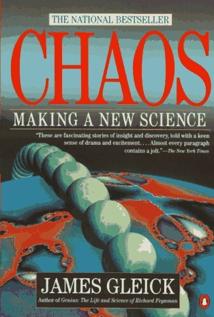
Nature forms patterns. Some are orderly in space but disorderly in time, others orderly in time but disorderly in space. Some patterns are fractal, exhibiting structures self-similar in scale. Others give rise to steady states or oscillating ones. Pattern formation has become a branch of physics and of materials science, allowing scientists to model the aggregation of particles into clusters, the fractured spread of electrical discharges, and the growth of crystals in ice and metal alloys. The dynamics seem so basic—shapes changing in space and time—yet only now are the tools available to understand them.
Chaos is the study of non-linear systems. Of fractals. Of … chaos. It takes the world we know it and proves that, at some level, we don’t know anything. We can simulate the world to ever increasing levels of accuracy and at some point, things just blow up.
It’s a neat idea, not nearly as weird as it was 40 years ago when this was written (and even then, three years before Jurassic Park made it really cool). I’ve messed with fractals more than a bit and studied quite a bit of higher level math in school, so little of this is particularly new to me–so I’m probably ont the target audience.
Overall, this book is really more about the history and discovery of chaos, rather than necessarily digging into the math and how it really works (when we even know). It’s interesting, but not what I was expecting.
So… I’m glad enough that I read it, but probably wouldn’t strongly recommended it. So it goes.